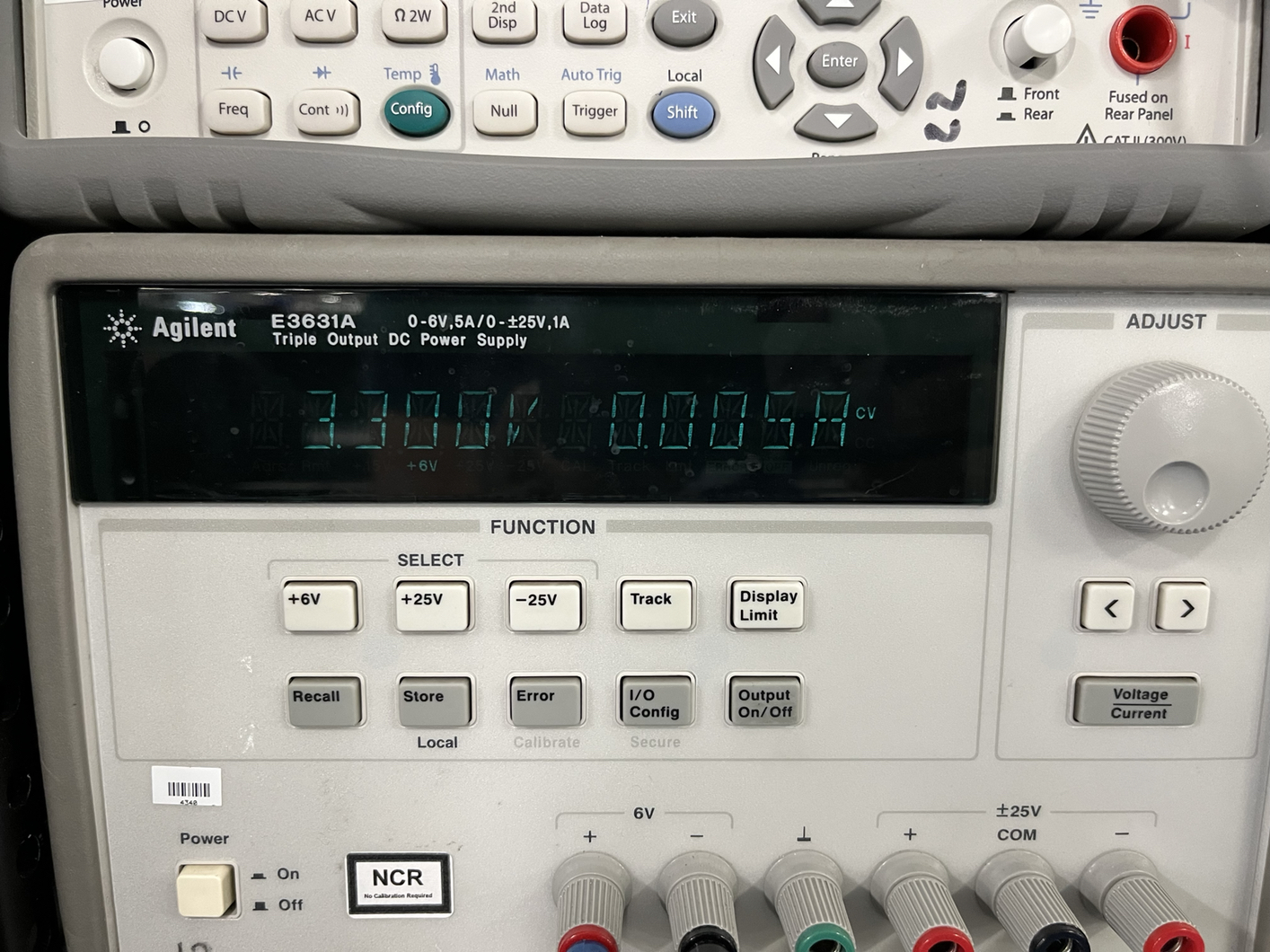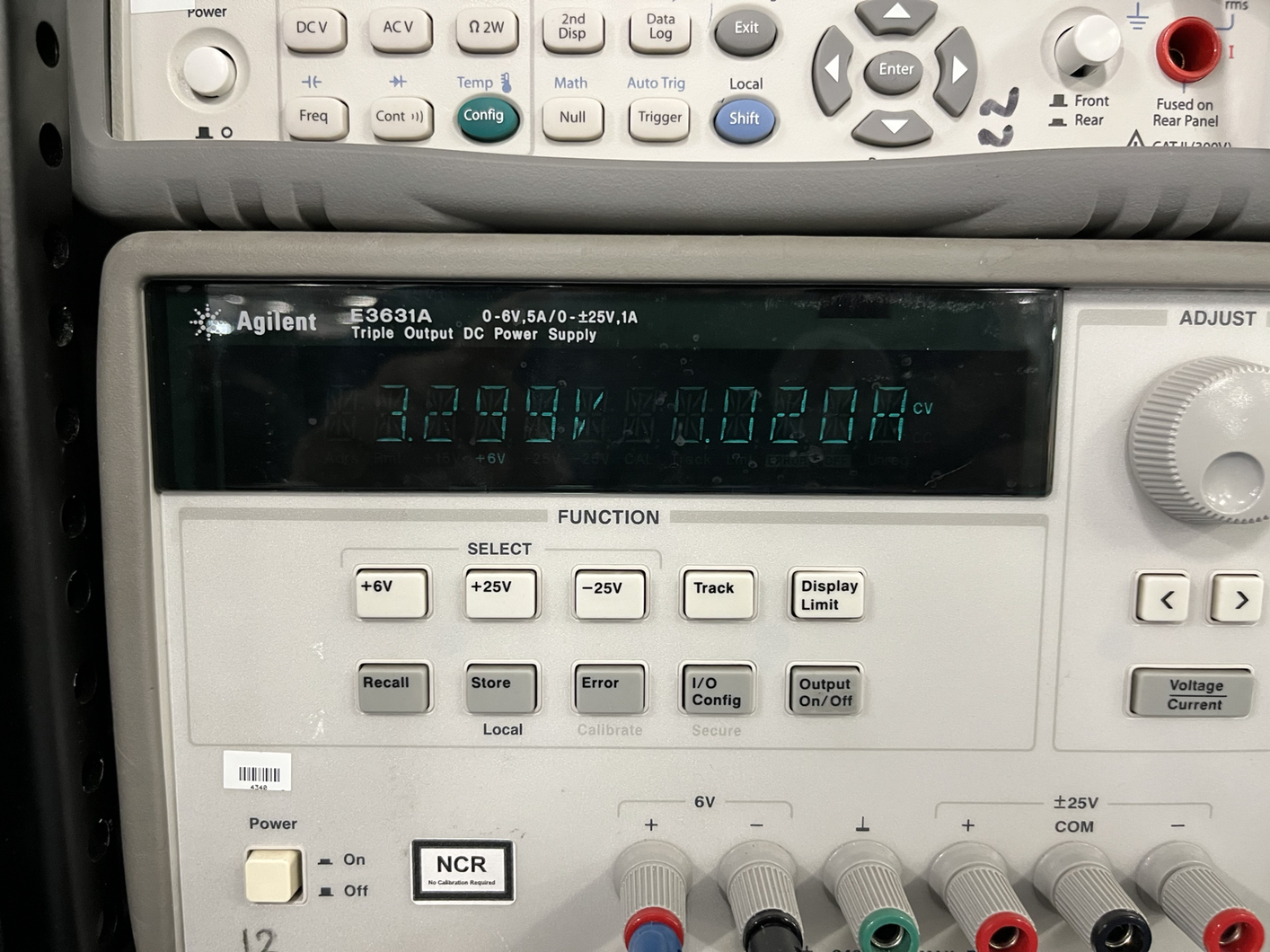SLYA060 August 2022 TMAG5110 , TMAG5110-Q1 , TMAG5111 , TMAG5111-Q1
8.2 Power Consumption
To test the power consumption of each encoder systems, we disconnected the encorders from the TI-RSLK system and powered them separately. In doing so, we are able to isolate the power consumption required by each encoder technology. The TMAG5111 encoder board showed a clear advantage over its optical counterpart, consuming 5 mA during operation (Figure 8-4), while the IR encoder board consumed a total of 20 mA during operation (Figure 8-5). Adding another IR encoder for direction would most likely double the power consumption, all while the Hall-effect board would remain at 5 mA because both the speed and direction are included in one device.
 Figure 8-4 TMAG5111 Encoder Current Consumption.
Figure 8-4 TMAG5111 Encoder Current Consumption.  Figure 8-5 IR Encoder Current Consumption.
Figure 8-5 IR Encoder Current Consumption.